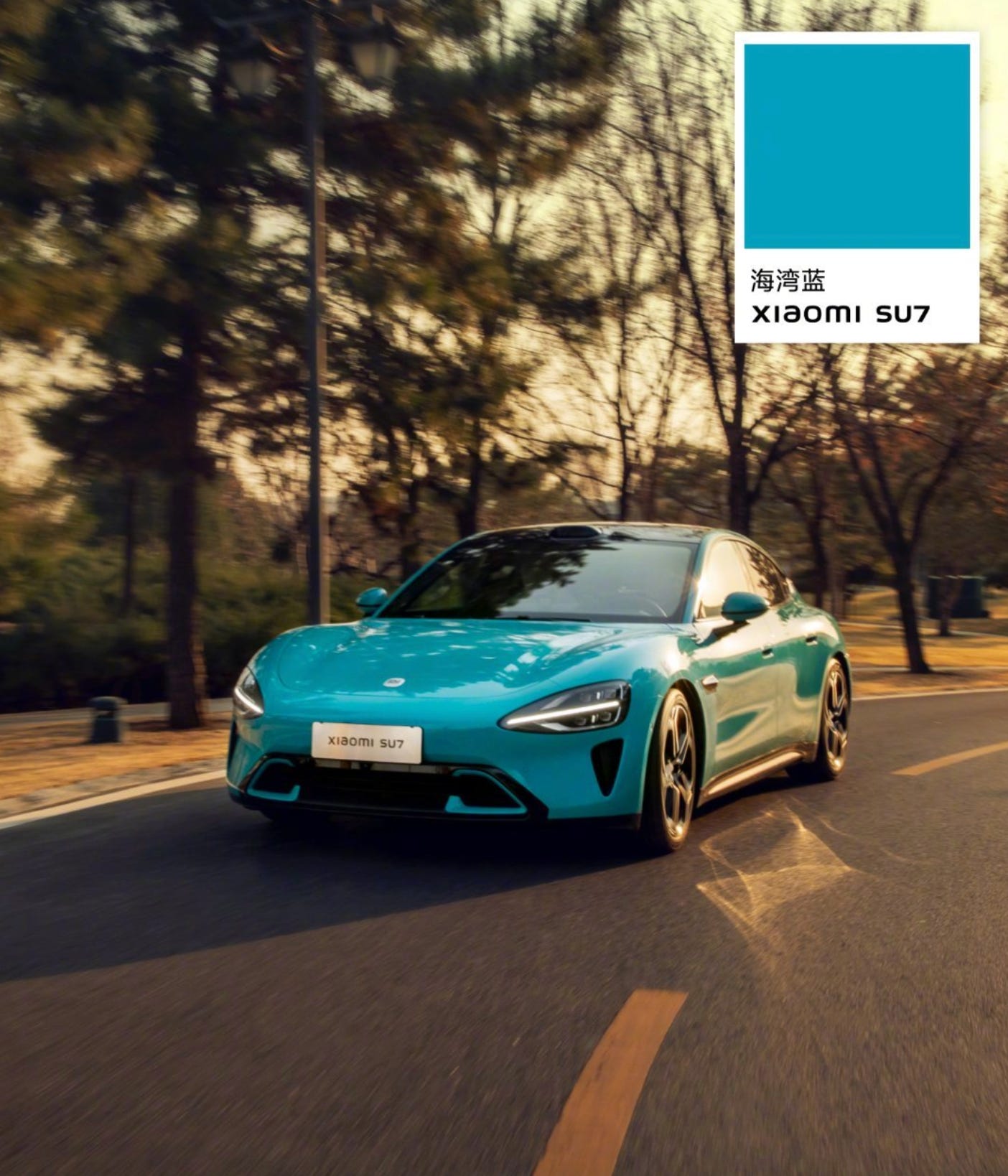Xiaomi's First Automotive Foray: Unpacking the Market Frenzy
A recap of the first 3 days post launch of the most anticipated vehicle of the year
Xiaomi's recent entry into the EV market has sparked a buying frenzy, challenging established industry norms. At the heart of Beijing's bustling Hopson One Shopping Mall, the Xiaomi store became a spectacle of consumer excitement after the unveiling the much-anticipated Xiaomi SU7.
Surge in Consumer Interest
The launch day witnessed an extraordinary scene: an overwhelming crowd, encompassing a diverse demographic, swarmed the Xiaomi store, eager to catch a glimpse of the SU7. The vehicle, showcased in an eye-catching Bay Blue, was an instant hit.
numbers speak volumes, with 50,000 deposits collected within minutes and total reservations nearing 90,000 in just one day, dwarfing the sales figures of traditional automotive giants. Normally, it takes almost 6 months to collect this many orders post launch.
Online, the SU7 was the talk of social media. 7 of the top 15 keywords on Weibo (i.e. Chinese Twitter/X) that day were related to Xiaomi and the SU7.
Offline, the Xiaomi store, typically known for its consumer electronics, transformed into an automotive hotspot overnight. Consumers visiting are diverse, from tech enthusiasts to elderly individuals, underscored the wide appeal of Xiaomi's automotive venture. In contrast, neighboring competitors like Huawei's AITO M7 and M9 attracted only a fraction of Xiaomi's crowd, highlighting the stark difference in consumer pull.
Interestingly, Xiaomi's new vehicle has not only captivated existing fans but also attracted a new segment of consumers, many of whom are novices in the car-buying process. This unprecedented demographic shift is crucial for understanding Xiaomi's disruptive power. The company's ability to draw in a vast customer base, including those with limited automotive exposure, is a massive competitive advantage that very few others have. Arguably, only Apple and Huawei are the only other 2 brands with similar brand loyalty.
The successful launch of SU7 also underscores how important brand awareness is in China.
Operational Challenges Amidst Market Euphoria
The enthusiasm, while a positive indicator of market demand, exposed operational strains. Stores across Beijing and other cities were inundated, pushing the limits of crowd management and test drive logistics.
To better manage this, store staff are divided into two teams: in-store sales and test drive team, akin to a mini production line. A paging system for test drive was implemented to manage the customer flow. As soon as the test drive vehicle completes a service and arrives at the store's entrance, a salesperson will immediately call the number to let the next customer to get in the car. That previous test drive customer will then be handed over to in-store sales person.
Despite these efforts, the sheer volume of interest led to fully booked test drives and stretched the capacity of sales staff. Test drives at certain hot markets were fully booked out for 9 straight days, and many sales staff don’t have time to eat lunch during the day. One test drive vehicle used up its entire 800km range in a single day doing nothing but test drives.
Consumers Are Buying In
With that said, Xiaomi’s efforts are bearing fruit. Recent data from 36kr revealed that approximately 25,000 of the initial 90,000 orders have now become fully non-refundable, indicating strong commitment from buyers. This conversion to non-refundable status is viewed positively, with expectations for this rate to increase further.
The excitement around Xiaomi’s SU7 has translated into considerable wait times for eager customers. Depending on the chosen model, buyers could be waiting anywhere up to 6 months to receive their vehicles. The Standard Edition of the SU7 will take 11-14 weeks for delivery, the Pro Edition 13-16 weeks, and the Max Edition, the longest, at 19-22 weeks.
Now the next set of challenge is production ramp. Previously, Xiaomi had planned for an 80,000 unit capacity with its suppliers. It has now instructed suppliers to plan for a 120,000 units capacity, aiming for 10,000 deliveries/month. Managing its supply chain and production to ensure vehicles are delivered to customers on time with quality, is the next challenge ahead for Xiaomi and Lei Jun.
Future Outlook
Xiaomi's rapid accumulation of orders signifies a market disruption that may redefine competitive landscape in the automotive sector. Along the way, there will inevitably be operational hurdles and challenges. For example, in the first day post launch, there was some confusion over whether the deposits were refundable, causing a small controversy on social media. How well and quickly Xiaomi reacts to that will be key to its success in the coming months. As Xiaomi navigates these challenges, its peers will watch its every move and react accordingly.
As the first few days have indicated, Xiaomi & Lei Jun means serious business, and they certainly have the brand, capital, and operational excellence to pull this off.









